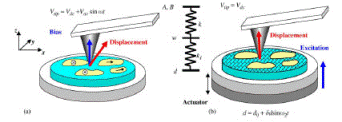Department of Physics and Astronomy: Publications and Other Research
Date of this Version
2020
Citation
Adv. Funct. Mater. 2020, 30, 2000109
DOI: 10.1002/adfm.202000109
Abstract
A domain wall-enabled memristor is created, in thin film lithium niobate capacitors, which shows up to twelve orders of magnitude variation in resistance. Such dramatic changes are caused by the injection of strongly inclined conducting ferroelectric domain walls, which provide conduits for current flow between electrodes. Varying the magnitude of the applied electric-field pulse, used to induce switching, alters the extent to which polarization reversal occurs; this systematically changes the density of the injected conducting domain walls in the ferroelectric layer and hence the resistivity of the capacitor structure as a whole. Hundreds of distinct conductance states can be produced, with current maxima achieved around the coercive voltage, where domain wall density is greatest, and minima associated with the almost fully switched ferroelectric (few domain walls). Significantly, this “domain wall memristor” demonstrates a plasticity effect: when a succession of voltage pulses of constant magnitude is applied, the resistance changes. Resistance plasticity opens the way for the domain wall memristor to be considered for artificial synapse applications in neuromorphic circuits.
Supplementary Information: Figures S1-S3, Details on Methods
Included in
Atomic, Molecular and Optical Physics Commons, Condensed Matter Physics Commons, Engineering Physics Commons, Other Physics Commons


Comments
© 2020 The Authors. Published by WILEY-VCH Verlag GmbH & Co. KGaA, Weinheim. This is an open access article under the terms of the Creative Commons Attribution License